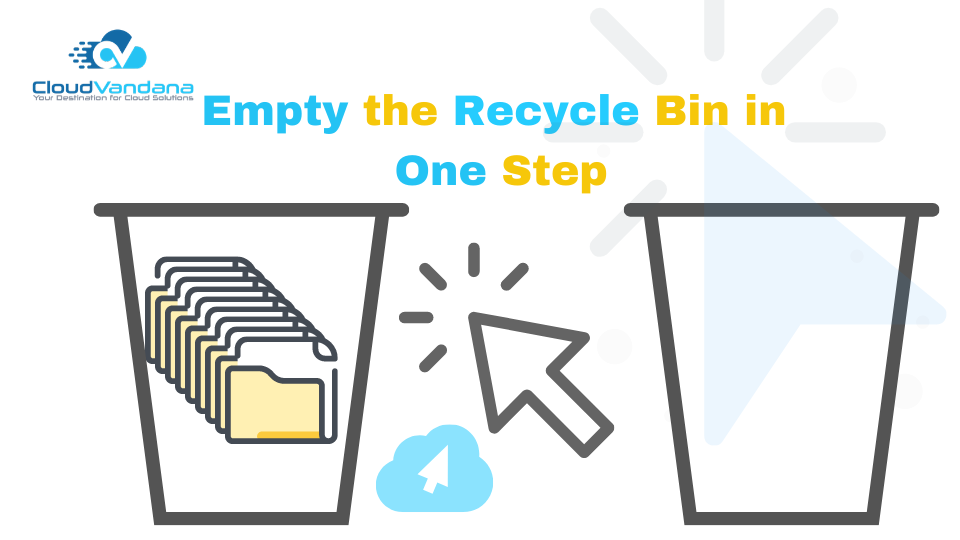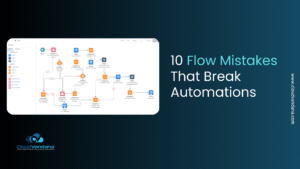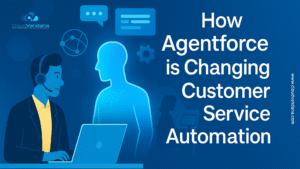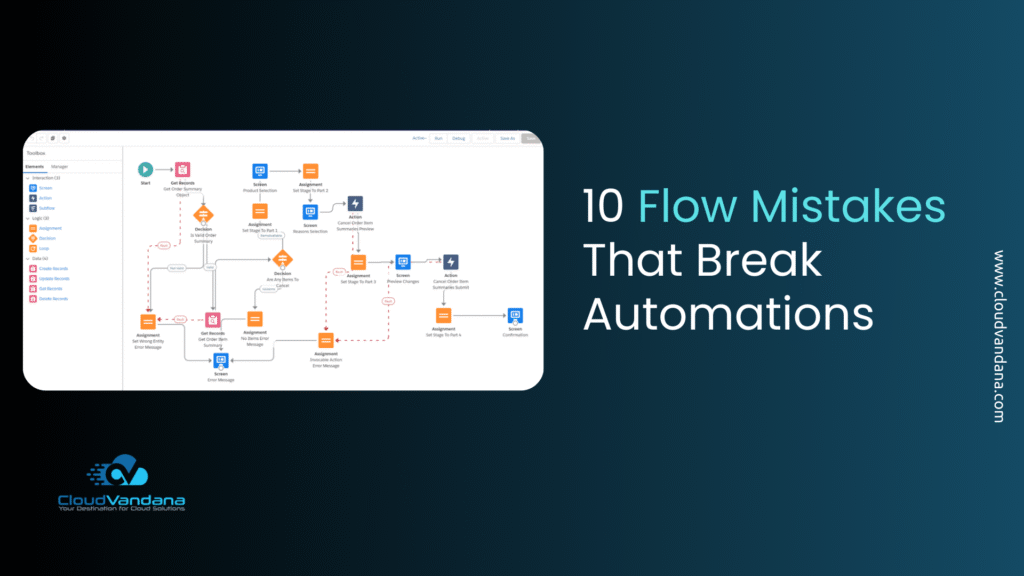Discover how to empty the Salesforce Recycle Bin in one step. Learn best practices, permission requirements, and cleanup strategies to maintain a lean and compliant org.
In the lifecycle of every Salesforce record, deletion is inevitable. Whether it’s obsolete leads, outdated opportunities, or deprecated custom objects, the Recycle Bin acts as a safety net. But like any safety net, it must be cleaned out periodically to keep your environment clean and compliant.
Salesforce now makes it easier than ever to empty the entire Recycle Bin in one step—dramatically simplifying org maintenance.
Table of Contents
- What Is the Salesforce Recycle Bin?
- Where Deleted Records Go—and Why They Stay
- The Purpose of the Recycle Bin in Data Governance
- How the Recycle Bin Works for Users vs. Admins
- Default Limitations in Record Deletion
- Understanding Soft Delete vs. Hard Delete in Salesforce
- Manual Recycle Bin Cleanup: The Conventional Approach
- Why Emptying the Recycle Bin Matters
- The Impact of Cluttered Recycle Bins on Org Health
- Data Retention Periods: 15 Days and What That Means
- Who Can Empty the Recycle Bin? Permission Requirements
- The “Empty Org Recycle Bin” Button: Where to Find It
- One-Click Cleanup: How to Use the Empty Recycle Bin Feature
- Automating Recycle Bin Cleanup with Apex
- Using Salesforce Workbench to Purge Deleted Records
- The Dangers of Premature Deletion
- Backup Before You Purge: Best Practices for Protection
- Auditing and Monitoring Recycle Bin Activity
- Recycle Bin and Large Data Volume (LDV) Environments
- Differences in Recycle Bin for Classic vs. Lightning
- Sandbox vs. Production: Managing Recycle Bin Strategies
- Third-Party Tools for Enhanced Deletion Management
- Considerations for GDPR and Compliance When Emptying the Bin
- Strategic Cleanup: Monthly, Quarterly, or Trigger-Based?
- How to Recover from Accidental Mass Deletion
- Educating Your Users on Safe Deletion Protocols
- Building a Recycle Bin Policy for Your Org
- Future of Recycle Bin Management in Salesforce
- Conclusion: Purging Smarter, Not Just Faster
- YOU MIGHT ALSO LIKE
What Is the Salesforce Recycle Bin?
The Recycle Bin is Salesforce’s temporary holding space for deleted records. Much like the trash folder on your computer, it gives users and admins a window of time to restore mistakenly deleted data or permanently remove it when ready.
Where Deleted Records Go—and Why They Stay
When a record is deleted, it’s not immediately purged from the system. It enters a “soft deleted” state and is moved to the Recycle Bin. This allows for recovery—intentional or accidental—before the record is permanently wiped.
The Purpose of the Recycle Bin in Data Governance
From a governance standpoint, the Recycle Bin enables traceability and prevents data loss. It creates an audit-friendly trail of recently deleted items and provides a buffer period for data correction.
How the Recycle Bin Works for Users vs. Admins
End users only see the records they deleted. Admins, on the other hand, have access to the org-wide Recycle Bin, allowing them to manage all deleted records within the org—making them the stewards of complete cleanup.
Default Limitations in Record Deletion
Salesforce restricts certain deletions:
- Deleted records stay for 15 days
- Only those with the correct permissions can clear the bin
- Not all record types are easily recoverable after purging
Understanding these boundaries is crucial before performing mass deletion.

Understanding Soft Delete vs. Hard Delete in Salesforce
Salesforce uses two types of deletion:
- Soft Delete: Moves record to Recycle Bin; recoverable
- Hard Delete: Completely removes the record from the system; unrecoverable
Emptying the Recycle Bin converts soft-deleted records into hard-deleted ones.
Manual Recycle Bin Cleanup: The Conventional Approach
Historically, users had to:
- Access the Recycle Bin
- Scroll through batches of records
- Select individual or multiple records
- Click “Permanently Delete”
It was tedious, time-consuming, and prone to oversight.
Why Emptying the Recycle Bin Matters
A cluttered Recycle Bin isn’t just cosmetic—it impacts storage limits, slows org performance, and introduces risk. Proactive deletion ensures your system remains lean, responsive, and audit-ready.
The Impact of Cluttered Recycle Bins on Org Health
Leaving thousands of deleted records in limbo affects:
- Storage utilization quotas
- System indexing performance
- Backup bloat and API queries
- Data audits and compliance checks
In high-volume orgs, cleanup isn’t optional—it’s critical.
Data Retention Periods: 15 Days and What That Means
Salesforce automatically empties the Recycle Bin after 15 days. However, that’s 15 days from the date of deletion, not from when it lands in the bin. Waiting passively for auto-deletion means living with unnecessary data load.
Who Can Empty the Recycle Bin? Permission Requirements
Only users with “Modify All Data” permission can clear the org-wide Recycle Bin. For safety, this permission is typically reserved for system administrators or delegated super users.
The “Empty Org Recycle Bin” Button: Where to Find It
In Lightning Experience:
- Go to App Launcher > Recycle Bin
- Switch to “Org Recycle Bin” tab
- Locate the “Empty Org Recycle Bin” button
- Click to confirm permanent deletion of all records
This one-click approach saves hours of manual effort.
One-Click Cleanup: How to Use the Empty Recycle Bin Feature
When the button is clicked:
- All records in the Recycle Bin—regardless of object—are hard deleted
- Records become unrecoverable
- Audit logs retain deletion events for security purposes
- No undo option is available—action is final
Always double-check before executing.
Automating Recycle Bin Cleanup with Apex
Developers can create scheduled Apex jobs to identify and hard-delete records programmatically. Example:
apexCopyEditDatabase.emptyRecycleBin([SELECT Id FROM Account WHERE IsDeleted = TRUE]);
This allows for automation that complements or replaces the UI-based deletion workflow.
Using Salesforce Workbench to Purge Deleted Records
Workbench, Salesforce’s powerful admin tool, allows users to:
- Query soft-deleted records
- Use the
emptyRecycleBinAPI operation - Schedule bulk deletions via XML input
- Audit deleted record IDs pre-purge
It’s especially useful in sandbox and staging environments.

The Dangers of Premature Deletion
Emptying the Recycle Bin without review can lead to:
- Loss of recoverable data
- Destruction of records pending validation
- Misalignment with data retention policies
- Disruption of dependencies like automation flows
Never purge blindly. Review deletion logs or run a WHERE IsDeleted = TRUE SOQL query before final steps.
Backup Before You Purge: Best Practices for Protection
Always export deleted records before purging. Use:
- Salesforce Data Export
- Workbench Bulk Query
- Third-party backup platforms
Saving a .CSV archive ensures you have a fallback in case of overzealous deletion.
Auditing and Monitoring Recycle Bin Activity
Admins should track:
- Who deleted what
- When records were deleted
- Why deletions occurred
- Which records were recovered vs. purged
Use the Setup Audit Trail, Event Monitoring, or create a custom deletion log with Apex triggers.
Recycle Bin and Large Data Volume (LDV) Environments
For orgs managing millions of records, Recycle Bin strategy becomes essential. Consider:
- Weekly or monthly deletion jobs
- Segmenting deletions by object or date
- Automating based on volume thresholds
- Exporting before purging for legal archiving
LDV orgs cannot afford passive deletion cycles.
Differences in Recycle Bin for Classic vs. Lightning
Classic UI:
- Recycle Bin embedded in sidebar
- Lacks “Empty Org” button
- Requires more manual interaction
Lightning UI:
- Centralized Recycle Bin page
- One-click full emptying
- Enhanced visibility and filtering
Lightning is superior for Recycle Bin management in every metric.
Sandbox vs. Production: Managing Recycle Bin Strategies
In Sandboxes:
- Purging is more aggressive
- Storage limits are tighter
- Cleanup supports refresh cycles
In Production:
- Focus is on compliance
- Greater need for caution
- More oversight required before purge
Each environment demands tailored deletion discipline.
Third-Party Tools for Enhanced Deletion Management
Consider tools like:
- OwnBackup
- Spanning
- Gearset
- Odaseva
These platforms offer deeper control, versioning, recovery assurance, and scheduled deletion intelligence.
Considerations for GDPR and Compliance When Emptying the Bin
For data subjects exercising deletion rights:
- You must fully purge their records—not just soft delete
- Recycle Bin purging is essential for GDPR Article 17 compliance
- Document each purge action for audit readiness
Full deletion is not optional—it’s regulatory.
Strategic Cleanup: Monthly, Quarterly, or Trigger-Based?
Set a cadence:
- Monthly for small-to-mid orgs
- Bi-weekly for high-volume environments
- Event-based for campaigns, projects, or uploads
Integrate cleanup into your regular admin checklist.
How to Recover from Accidental Mass Deletion
If a purge occurs prematurely:
- Check your backup solution
- Contact Salesforce Support for emergency recovery (limited window)
- Re-import data via Data Loader or Backup API
- Rebuild any lost references or attachments
Time is of the essence—act fast.
Educating Your Users on Safe Deletion Protocols
Create internal documentation that explains:
- Soft delete vs. permanent delete
- What the Recycle Bin is for
- Why not to delete critical records
- When to escalate deletion requests to admins
User education reduces cleanup risks tenfold.
Building a Recycle Bin Policy for Your Org
Draft a written protocol:
- Who owns deletion strategy
- How often bins are purged
- Which records are exempt
- Backup responsibilities
- Recovery process for errors
Treat deletion like you treat backups—with rigor and documentation.
Future of Recycle Bin Management in Salesforce
Salesforce may soon introduce:
- Smart deletion suggestions
- AI-powered retention review
- Recycle Bin analytics dashboards
- Deletion rollback windows or versioning
Expect smarter, safer cleanup workflows in upcoming releases.
Conclusion: Purging Smarter, Not Just Faster
Emptying the Recycle Bin in one step is a powerful capability—but with great power comes great responsibility. A well-executed purge frees storage, improves system performance, and supports compliance. But without checks, it can do more harm than good.
Approach deletion with intention. Document your process. And always ensure that the “one click” is backed by thoughtful governance.
At CloudVandana, we empower organizations to manage Salesforce with precision and peace of mind. Whether it’s purging obsolete data, optimizing storage, or enforcing compliance through smart deletion policies, our Salesforce-certified consultants ensure your environment runs lean, secure, and scalable.
We help you design cleanup routines that align with your business logic—without risking data loss. From automating Recycle Bin purges to creating recovery protocols and audit trails, CloudVandana delivers intelligent data stewardship tailored to your needs.
👉 Explore our Salesforce optimization services here:
















